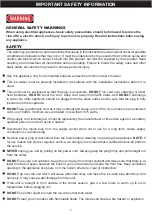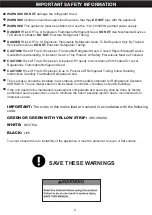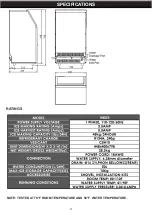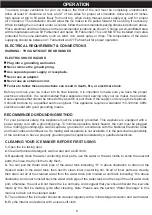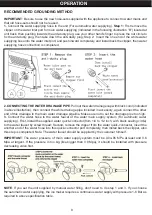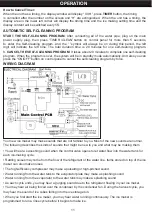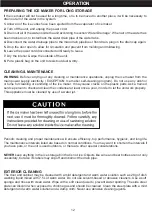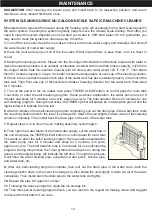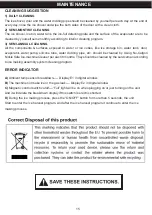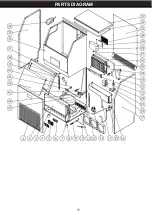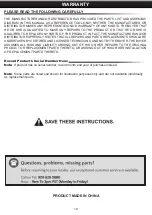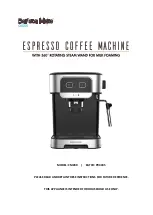
PREPARING THE ICE MAKER FOR LONG STORAGE
If the ice maker will not be used for a long time, or is to be moved to another place, it will be necessary to
drain out all of the water in the system.
1.
Allow all of the ice cubes have been ejected from the evaporator of ice maker.
2.
Turn off the unit, and unplug the power cord.
3.
Drain out all of the water inside the unit according to section “Water Drainage”. When all of the water has
been drained out, to install back the water drain pipe of the water tank..
4.
Disconnect the water drainage pipe to the main drain pipeline or floor drain, plug on the drain cap again.
5.
Drop the door open to allow for circulation and prevent from molding and mildewing.
6.
Leave the power cord disconnected until ready to reuse.
7.
Dry the interior & wipe the outside of the unit.
8.
Put a plastic bag on the unit to resist out dust & dirty.
CLEANING & MAINTENANCE
WARNING
: Before carrying out any cleaning or maintenance operations, unplug the ice maker from the
main power supply electricity. (EXCEPTION: Ice maker self-cleaning program). Do not use any alcohol
or fume for cleaning or sanitizing of the ice maker. It may cause cracks on the plastic parts. Ask a trained
service person to check and clean the condenser at least once a year, in order to let the unit work properly.
This appliance must be cleaned by use of a water jet.
12
Periodic cleaning and proper maintenance will ensure efficiency, top performance, hygienic, and long life.
The maintenance intervals listed are based on normal conditions. You may want to shorten the intervals if
you have pets, or the unit is used outdoors, or there are other special considerations.
NEVER
keep anything in the ice storage bin that is not ice: Objects like wine and beer bottles are not only
unsanitary, but also it’s labels may slip off and obstruct the drain pipe.
EXTERIOR CLEANING
The door and cabinet may be cleaned with a mild detergent and warm water solution such as 28g of dish
washing liquid mixed with 7.5L of warm water. Do not use solvent-based or abrasive cleaners. Use a soft
sponge and rinse with clean water. Wipe with a soft clean towel to prevent water spotting. The side steel
plate can discolor when exposed to chlorine gas and should be cleaned. Clean the steel plate with a mild
detergent and warm water solution and a damp cloth. Never use abrasive cleaning agents.
OPERATION


